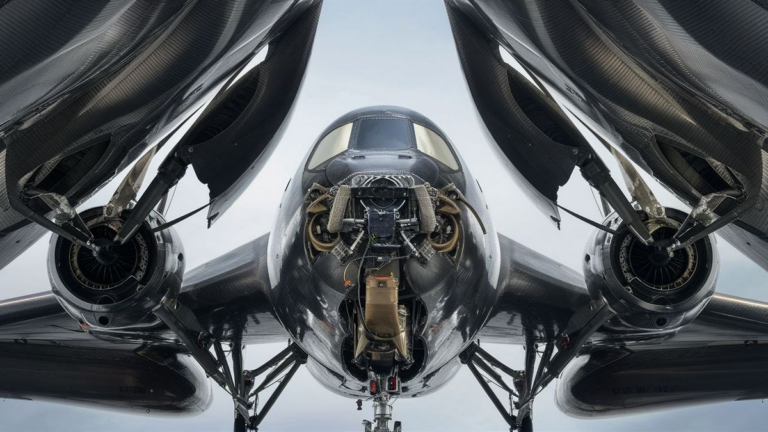Composites are increasingly becoming the material of choice in aircraft construction, revolutionizing the aerospace industry with their remarkable properties and capabilities.
The Advantages of Composites in Aircraft
Composite materials offer a multitude of advantages over traditional materials like aluminum or steel. One of the primary benefits is their exceptional strength-to-weight ratio. Composites are much lighter than metals, allowing for reduced fuel consumption and increased payload capacity, ultimately leading to more efficient and cost-effective operations.
Moreover, composites exhibit superior resistance to corrosion and fatigue, which are critical factors in aircraft maintenance and longevity. Unlike metals, composites do not rust or degrade when exposed to harsh environmental conditions, resulting in lower maintenance costs and longer service life.
Additionally, composites offer unparalleled design flexibility, enabling manufacturers to create complex shapes and structures that would be impractical or impossible with conventional materials. This versatility allows for the optimization of aerodynamics and performance, leading to enhanced fuel efficiency and maneuverability.
Types of Composite Materials Used in Aircraft
There are various types of composite materials utilized in aircraft construction, each offering unique properties and advantages.
Carbon fiber composites, for instance, are renowned for their exceptional strength and stiffness, making them ideal for applications where high performance is paramount, such as fuselage and wing components.
Fiberglass composites, on the other hand, are valued for their affordability and ease of manufacturing, often used in secondary structures and interior components.
Furthermore, advanced composite materials like aramid fibers provide enhanced impact resistance and durability, contributing to the safety and reliability of aircraft.
Applications of Composites in Aircraft
Composites are utilized in various aircraft components, ranging from structural elements to interior fittings.
Primary structures such as fuselages, wings, and empennages increasingly incorporate composite materials to achieve optimal strength and weight characteristics.
Additionally, composite materials are employed in secondary structures such as fairings, spoilers, and access panels, where their lightweight and durable properties offer significant advantages.
Moreover, composites play a crucial role in enhancing passenger comfort and safety by providing insulation, vibration dampening, and fire resistance in interior components such as cabin panels, overhead bins, and lavatories.
Future Trends in Composite Aircraft Design
The aerospace industry continues to push the boundaries of composite technology, exploring innovative materials and manufacturing techniques to further improve aircraft performance and efficiency.
One emerging trend is the use of additive manufacturing, also known as 3D printing, to produce complex composite structures with unprecedented precision and efficiency. This technology enables designers to create customized components tailored to specific performance requirements, while also reducing material waste and production time.
Furthermore, ongoing research in nanocomposites and bio-based materials holds promise for developing lightweight and environmentally sustainable aircraft solutions, addressing concerns about fuel consumption and carbon emissions.
In conclusion, the widespread adoption of composite materials in aircraft construction signifies a paradigm shift in aerospace engineering, ushering in an era of unprecedented performance, efficiency, and sustainability.
Environmental Impact of Composite Materials
While composite materials offer numerous advantages in aircraft construction, there are also considerations regarding their environmental impact.
Composite manufacturing processes often involve the use of resins and chemicals that can be harmful to the environment if not properly managed. Efforts are underway to develop more eco-friendly alternatives and improve recycling methods to minimize waste and pollution.
Recycling Challenges
One significant challenge in the aerospace industry is the recycling of composite materials. Unlike metals, composites are more difficult to recycle due to their complex composition and bonding mechanisms.
Research is ongoing to develop efficient recycling techniques that can recover valuable materials from retired aircraft components, reducing the environmental footprint of composite usage in aviation.
Cost Considerations and Market Trends
While the advantages of composite materials are clear, there are also cost considerations associated with their use in aircraft manufacturing.
Composite materials can be more expensive than traditional metals, both in terms of raw materials and manufacturing processes. However, advancements in production techniques and economies of scale are driving down costs and making composites more economically viable for widespread adoption in the aerospace industry.
Market Growth and Opportunities
The market for composite materials in aircraft manufacturing is experiencing steady growth, driven by increasing demand for lightweight, fuel-efficient aircraft.
Companies involved in composite production and aerospace manufacturing are investing heavily in research and development to capitalize on this trend, creating new opportunities for innovation and market expansion.
Frequently Asked Questions
| Question | Answer |
|---|---|
| Are composite materials safe for aircraft construction? | Yes, composite materials undergo rigorous testing and certification processes to ensure they meet safety standards for aircraft use. |
| How do composite materials contribute to fuel efficiency? | Composite materials are lighter than traditional metals, reducing the overall weight of the aircraft and consequently decreasing fuel consumption. |
| What are the main challenges in recycling composite materials? | The complex composition and bonding mechanisms of composites make recycling challenging. Research is ongoing to develop efficient recycling techniques. |






